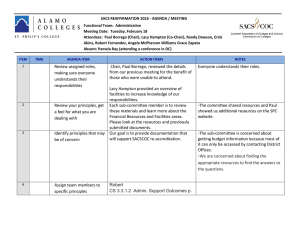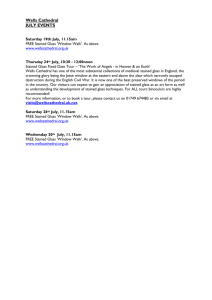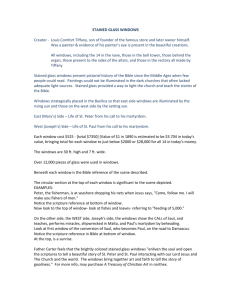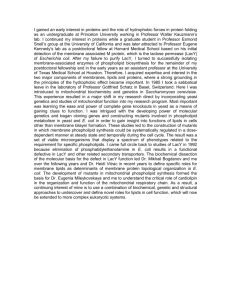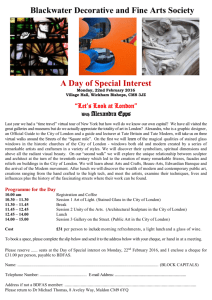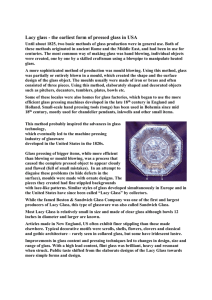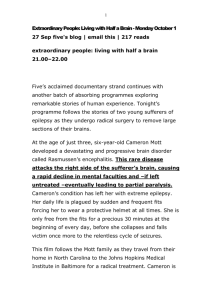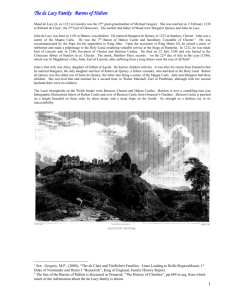Jean Lacy, I don`t think I am radical, I am just in search of truths
advertisement
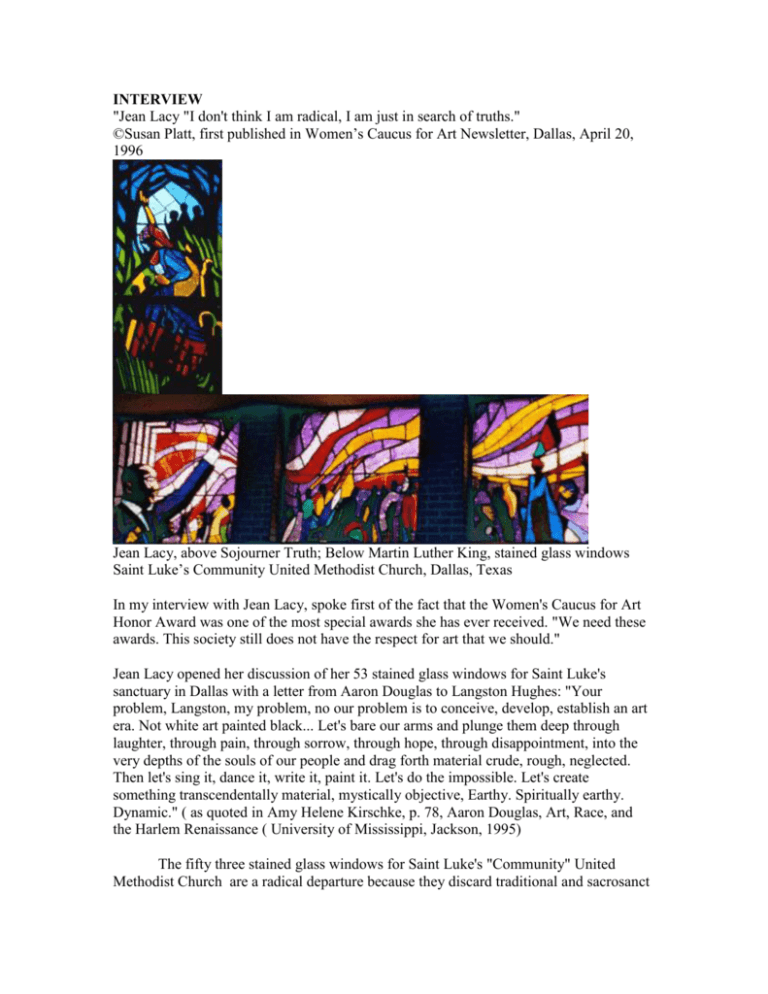
INTERVIEW "Jean Lacy "I don't think I am radical, I am just in search of truths." ©Susan Platt, first published in Women’s Caucus for Art Newsletter, Dallas, April 20, 1996 Jean Lacy, above Sojourner Truth; Below Martin Luther King, stained glass windows Saint Luke’s Community United Methodist Church, Dallas, Texas In my interview with Jean Lacy, spoke first of the fact that the Women's Caucus for Art Honor Award was one of the most special awards she has ever received. "We need these awards. This society still does not have the respect for art that we should." Jean Lacy opened her discussion of her 53 stained glass windows for Saint Luke's sanctuary in Dallas with a letter from Aaron Douglas to Langston Hughes: "Your problem, Langston, my problem, no our problem is to conceive, develop, establish an art era. Not white art painted black... Let's bare our arms and plunge them deep through laughter, through pain, through sorrow, through hope, through disappointment, into the very depths of the souls of our people and drag forth material crude, rough, neglected. Then let's sing it, dance it, write it, paint it. Let's do the impossible. Let's create something transcendentally material, mystically objective, Earthy. Spiritually earthy. Dynamic." ( as quoted in Amy Helene Kirschke, p. 78, Aaron Douglas, Art, Race, and the Harlem Renaissance ( University of Mississippi, Jackson, 1995) The fifty three stained glass windows for Saint Luke's "Community" United Methodist Church are a radical departure because they discard traditional and sacrosanct images ( what she called the Errol Flynn Jesus). "They present instead the sojourn of black people, the epic religious quest that has come through diaspora. From creation to Migration to Civil Rights, from our ancient past until today." The basis for these connections was partly from a Sunday school curriculum that Lacy developed over many years that made connections between the bible and contemporary events. The Last Supper becomes a sit in at a lunch counter. Christ on the cross is black and has an afro hairdo. Lacy was approached by the Reverend Zan W. Holmes a friend of her ex-husband to create windows for his new church. She had always worked small, but she decided to take on the challenge. She first went absolutely blank, but over the course of the year that she developed the windows she talked to people, she saw Matisse's chapel in France, visited the cathedrals of Europe. She began by paying tribute to some of the writers she enjoyed, such as James Weldon Johnson's God's Trombone, illustrated by Aaron Douglas in the 1920s. The Creation myth became a starting point. At the same time in the creation windows she included a bird, a spider, snails, a rabbit , a turtle, and an antelope, all from African folk stories of creation. In the cycle of the Crucifixion she includes the lynching of a black man, at the same time that the cord becomes a burial cloth. The boat refers to Egyptian deities, Isis and Osiris, the Holy Family and a slave ship. Cotton pickers appear with mask like faces instead of shepherds. Another series shows the emergence from Slavery, and includes Harriet Tubman, breaking the chain of slavery, Sojourner Truth, Mary Bethune, John Wesley, the only white man, and founder of the Methodist church. It also shows quilting and a reference to the migration to the city, and a birth scene in the inner city. A third series of images draws on photographs of Civil Rights marches in the sixties, as well as the struggles in South Africa. In the same wall on the freedom movement she included Martin Luther King, a lunch counter sit in, a reference to no rooms at the Inn, SNIC, and Malcolm X (the X also refers to voting before literacy). Lacy's windows are dazzling technically. They were fabricated by Robert Foster of Bryant, Texas of glass made in West Virginia. She had complete freedom in terms of the colors she could use and the result is dazzling. She described her windows as a blending of the historical and the educational story of "who we are as a people." She sought to make a visual narrative, very much in the tradition of the stained glass from the middle ages that could be read like a book in terms of symbols and contemporary references.
